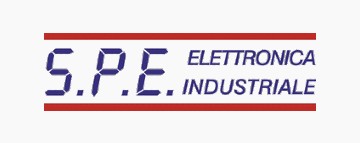EDM User Guide
Your rectifier is fully controlled by a microprocessor and is suitable for automatic recharging of lead batteries. The recharging cycle is Wa (decreasing current). For best results and safety, the user is required to read, follow and keep these instructions carefully. This device is to be used exclusively for recharging lead batteries of the voltage and capacity indicated in the paragraph entitled BATTERY. The manufacturer is not responsible for any damage due to improper use. This device is designed for use only in environments that are protected from any atmospheric disturbance. Many functions of this battery charger are programmable through an external programming interface called MP-Top II (Fig. 2). Call the supplier to modify the setting or to buy the programmer device.
BATTERY
This rectifier should be used to charge batteries that have the following characteristics:
- Battery type: wet lead battery not sealed;
- Rated Voltage: see nameplate of the battery charger (ex. 24 Volt)
- Capacity: the optimum value can be calculated on the basis of rated rectifier current In (see rating plate):
- Wa cycle: C = In x 6
- WoWa cycle: C = In x 4
- Example: Wa: In = 30A the capacity will be C = 180 Ah +/- 10%
- Example: WoWa: In = 30A the capacity will be C = 120 Ah +/- 10%
INSTALLATION
To ensure maximum safety, the installation has to be carried out as indicated by the manufacturer. Installation and any work on the rectifier must be carried out by qualified technical personnel. Install only after disconnecting the supply cable from the mains power supply and the output cables from the battery. After unpacking, ascertain that the device is in perfect condition. In case of doubt, do not use the device and contact the supplier. Install the rectifier in a protected place; do not install it:
- in any damp or dusty place or in presence of acids.
- in any place with temperatures below 0 and above 40°C (32 and 104°F)
- in any place that is in any way unsuitable for electronic devices
Do not obstruct the ventilation apertures. Do not place against a wall (leave at least 10 cm all around). Do not cover during operation.
POWER SUPPLY
Ascertain that the rating plate values are compatible with your mains power supply (voltage, frequency, power). Plug it into a tap that is equipped with protection that complies with standard regulations. If you have to use an extension cable, contact the manufacturer for correct technical information. The supply cable must be replaced only by qualified personnel.
INITIAL CALIBRATION
ATTENTION: before any intervention take off the power plug, and then disconnect the battery. To adapt the battery charger to the normal variations of the main power voltage (+/- 10% respect to the nominal value) open the box (Fig. 1-A) and move the BLUE wire on the terminal to the correct position shown on the table Tab.1 (Fig.1-B). This operation is fundamental for a correct functioning and should be performed only when installing the rectifier.
CONNECTION TO BATTERY
When connecting to the battery respect polarity (red wire to +, black wire to -), incorrect connection will not cause damage but does not allow the start of the charge cycle. The substitution of the connecting cables to the battery must be performed by qualified service personnel. If you must use an extension cable, call the manufacturer.
USER INTERFACE
See Fig.2
SWITCHING ON
The starting occurs only by properly connecting the battery. When the charger starts, the microprocessor switches on all the LEDs for 2 seconds (Pan.1). If the battery voltage is not correct, two fault conditions can be visualized:
- Battery voltage too low (minor than 1.0 V/cell) à display Pan.8.
- Battery voltage too high (greater than 2.4 V/cell) à display Pan.9.
If the battery is correctly connected and the power plug is inserted, the charge cycle is starting.
PHASE 1
This is the first recharging phase. The rectifier supplies current to the battery and battery voltage increases. In this phase the “Phase 1” LED will remain switched on (Pan.3). The initial value of the current (with the battery completely discharged, 2 V/cell) is the same as the rated value of the rectifier and will tend to decrease over time. With partially discharged batteries the current is lower. When the battery voltage will reach 2.40 V/cell (gasification), the microprocessor activates the Phase 2 (this occurs normally within 6-8 hours for the cycle Wa). The value of the gassing voltage can be changed by the MP-Top II.
STOP PHASE 1
If the battery does not reach Phase 2 within 12 hours, the microprocessor interrupts charging and shows the anomaly by the flashing at the same time of the LEDs “Phase 1”, “Phase 2” and “Stop” (Pan.10). This may happen because of a problem with the battery (aging or a faulty element) or a power supply problem too low. If this often happens, please call the assistance service.
PHASE 2
This phase, also called final phase, allows the achievement of 100% recharging. The microprocessor calculates the necessary time of the charge (minimum 30 minutes, maximum 4 hours) as a function of the behaviour of the battery. At this stage the “Phase 2” LED remains switched on (Pan.4).
STOP PHASE 2
After the calculated time, the microprocessor stops charging switching off the “Phase 2” LED and switching on the “Stop” LED (Pan.5). The battery is charged and ready for use.
EQUALIZATION
Completed the Phase 2, the microprocessor can activate the EQUALIZATION charge, depending on the programming. Ask your installer how the charger was set. This phase is composed of series of charge pulses alternating with periods of waiting. During the charging pulses, the “Equal” LED will light (Pan.6), during the waiting periods, the “Stop” LED will light (Pan.5). The EQUALIZATION charge is useful for maintaining balanced all the battery elements.
BUFFER
You can keep the battery charged to 100%, leaving the charger connected even during long periods of inactivity. At the end of the charge cycle (or the EQUALIZATION charge) the BUFFER charge goes into operation. This consists of alternating an active and a passive phase without any time limit. Active phase: the charger supplies current for 5 minutes. Passive phase: the charger does not supply any current for 8 hours. If the charger is connected for a long time the BUFFER phase compensates the self- discharge of the battery. During the charging pulses, the “Equal” LED will light (Pan.6), during the waiting periods, the “Stop” LED will light (Pan.5). Note: During the phases of Forming, Equalization and Buffer, it is possible to disconnect the battery. If the “Equal” LED is lit, before disconnecting the battery you must stop the charge by the “Stop” button.
CHARGE EFFICIENCY
If the charge of your battery is insufficient or excessive, it is possible to solve the problem by changing the parameter “Efficiency Factor” by MP-Top II. This operation can only be executed by qualified technical personnel.
DELAYED START
The switching on with programmable delay allows the use of electricity in the time slots at a lower cost and the cooling of the battery before the recharge. By MP-Top II you can program a delay of the start from 1 to 10 hours. Once you set the delay, this will be applied to each charge cycle executed. During the wait, the “Stop” LED is blinking (Pan.2). To disable the DELAYED START set the parameter to 0, using the MP-Top II.
MANUAL MODE
Sometimes it is necessary to reinvigorate the batteries with a very long charge. By MP-Top II you can set a MANUAL charge cycle with a duration ranging from 1 to 50 hours. Program the desired time, then connect the battery. The charger executes the manual charge cycle switching on the two “Phase 1” and “Phase 2” LEDs (Pan.7). The charge will stop automatically after the set time. If you disconnect the battery or press the STOP button, you can anticipate the end of the MANUAL cycle. The next charge cycle will be performed in AUTOMATIC mode.
PUMP
Some charger models require the use of the pump. By MP-Top II you can program the operating mode. Contact customer service to activate and/or modify this function.
SPECIAL SIGNALS
If during the charge, the microprocessor detects a problem, it stops the charger and it indicates with the 2 LEDs the various fault conditions occurred:
With the reading (by MP-Top II) and the analysis of the data stored by the battery charger, you can determine the exact cause of the fault reported.
DATA MEMORY
The internal microprocessor is able to store a significant amount of information throughout the life of the charger. This information can be read by MP-Top II connecting it to the programming connector accessible at the front panel (see fig. 3).
Reading this information you can determine the cause of the problems: it will be easily understood if it results from a malfunction of the charger or the battery. It is also possible to understand if the problems are caused by non-compliance of the rules by the user. Please be particularly careful when reading the user manual.
GENERAL RECOMMENDATIONS
Do not let the battery run down completely. If recharged when only partially discharged, the battery will last longer and the rectifier will do a better job. Prevent oxidation of the battery contacts. Never disconnect the battery if the rectifier is supplying current as the break-off spark could ignite the gases produced by the battery. Keep the charging area well ventilated.
MAINTENANCE
The charger does not require any maintenance. For cleaning the outside, use a damp cloth. Use only manufacturer approved spare parts.
Fill in this form to make an enquiry
If you would like one of our specialists to contact you for a no obligation discussion about your requirements, please fill in the quick form below.






